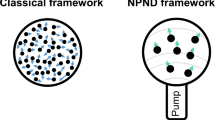Abstract.
Wavelet analysis has been applied to yeast cell cycle expression microchip data to reveal large-scale temporal structures and ubiquitous oscillations in mRNA levels. Discrete intervals in time within the cell cycle when expression levels changed were visualized as contour maps in which points of transition in gene expression among all 6178 genes were plotted as a function of cell cycle time. Time-frequency analysis using wavelet transforms supported the direct visualization and led to the conclusion that the predominant period is not the cell cycle but a higher frequency, 40 min, submultiple of the cycle. Each of the 6178 gene expression profiles was dissected by wavelet decomposition into all permitted frequencies from the Nyquist limit to roughly twice the cell cycle length. Transitions associated with maximum up- or down-regulation of mRNA levels appear as bands at circa 40-min intervals, half the length of the cycle, through two cell cycles. More than two thirds of the genes, including many of the cyclins, showed this half-cycle periodicity. Gene expression and events within the yeast cell cycle may be regulated by an attractor whose fundamental period is an emergent property of dynamic interactions within the yeast transcriptome.
Similar content being viewed by others
Author information
Authors and Affiliations
Additional information
Electronic Publication
Rights and permissions
About this article
Cite this article
Klevecz, R. Dynamic architecture of the yeast cell cycle uncovered by wavelet decomposition of expression microarray data. Funct Integr Genomics 1, 186–192 (2000). https://doi.org/10.1007/s101420000027
Received:
Accepted:
Published:
Issue Date:
DOI: https://doi.org/10.1007/s101420000027




